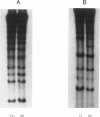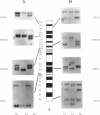Abstract
We used X-linked DNA polymorphisms to study the parental origin of X chromosome nondisjunction in 28 47,XXX live-born females. Errors in oogenesis accounted for 26 of the cases, with the majority of these being attributable to an error at meiosis I. We observed an association between advanced parental age and meiosis I nondisjunction--but not meiosis II nondisjunction--in the maternally derived cases. In studies of recombination we found little evidence for an association between pairing failure and X chromosome nondisjunction, but our results suggest that increased recombination near the centromere may play a role in the etiology of the 47,XXX condition.
Full text
PDF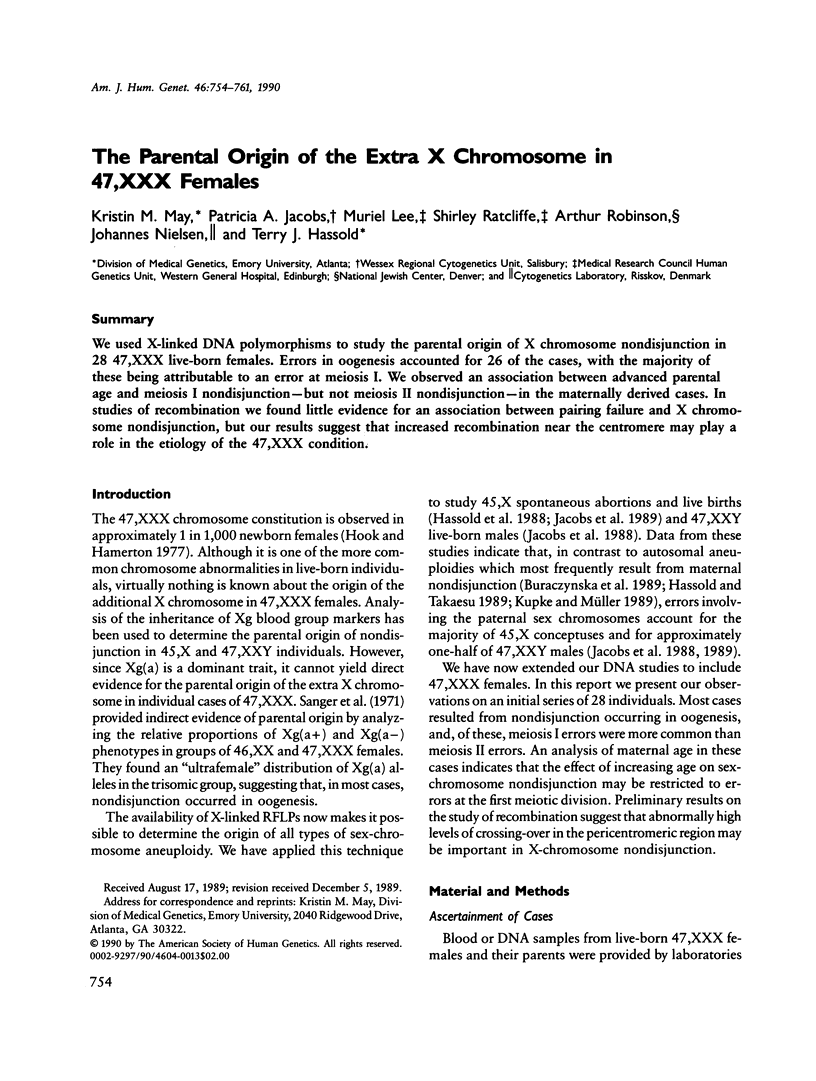
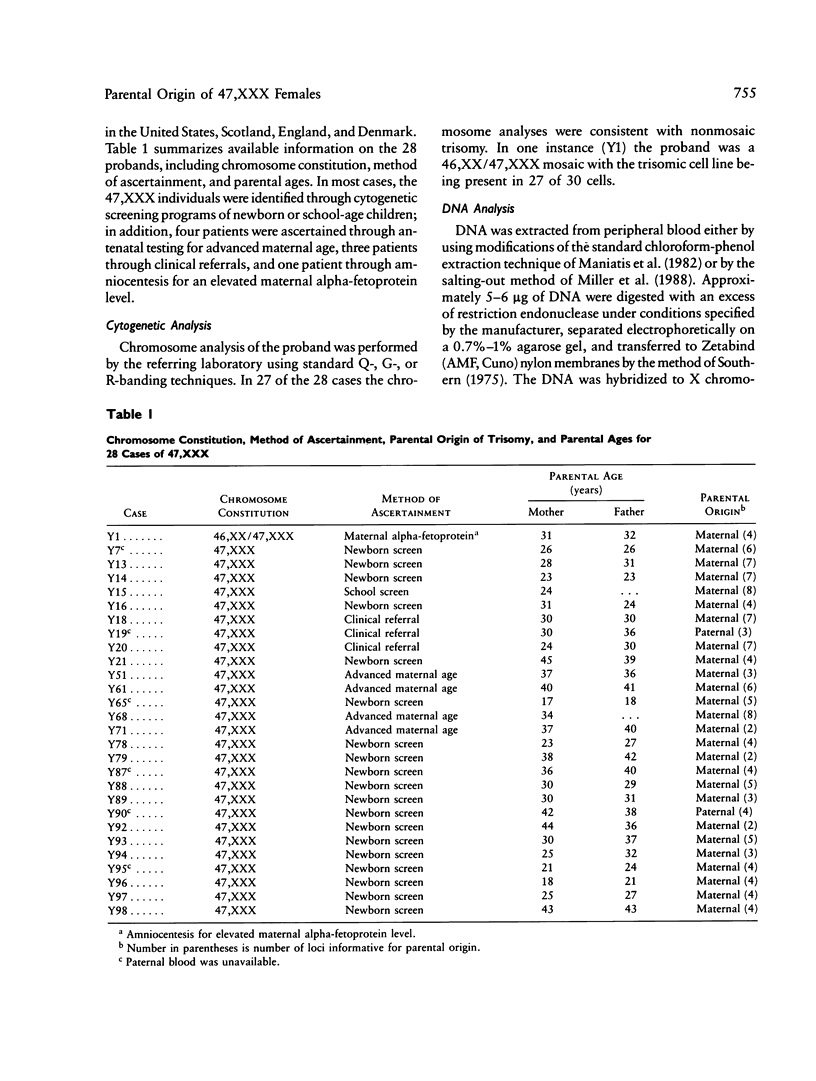
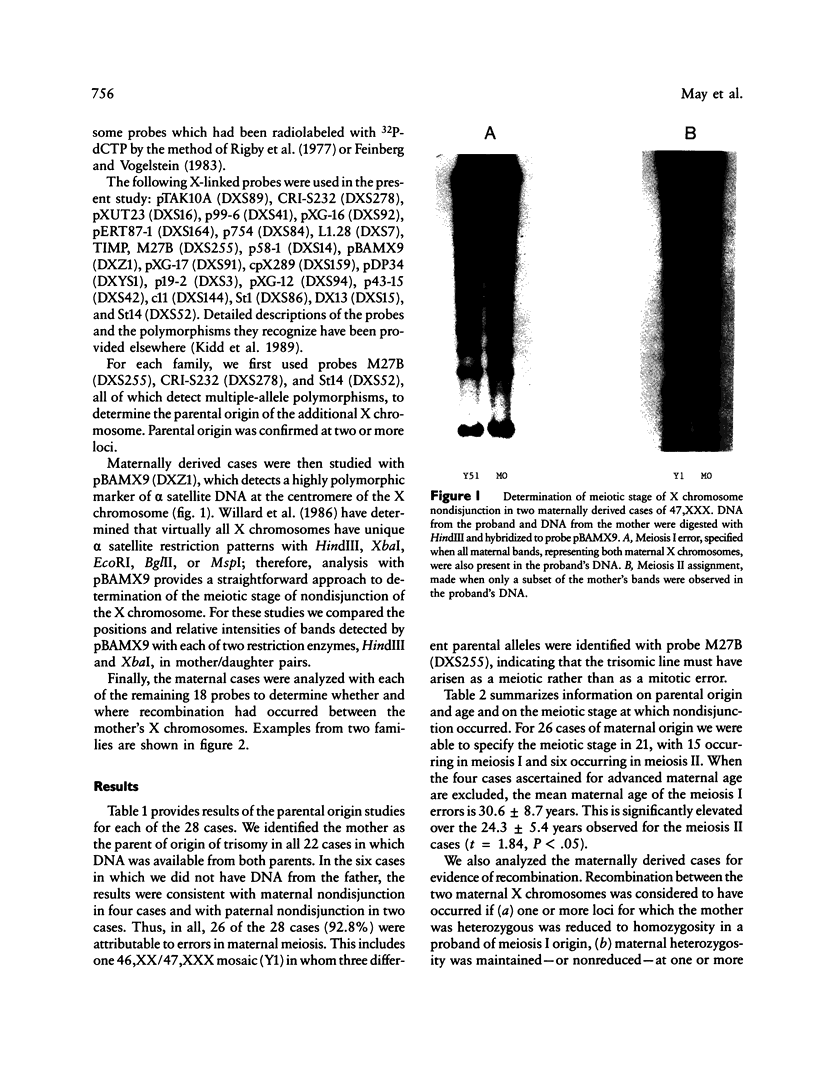
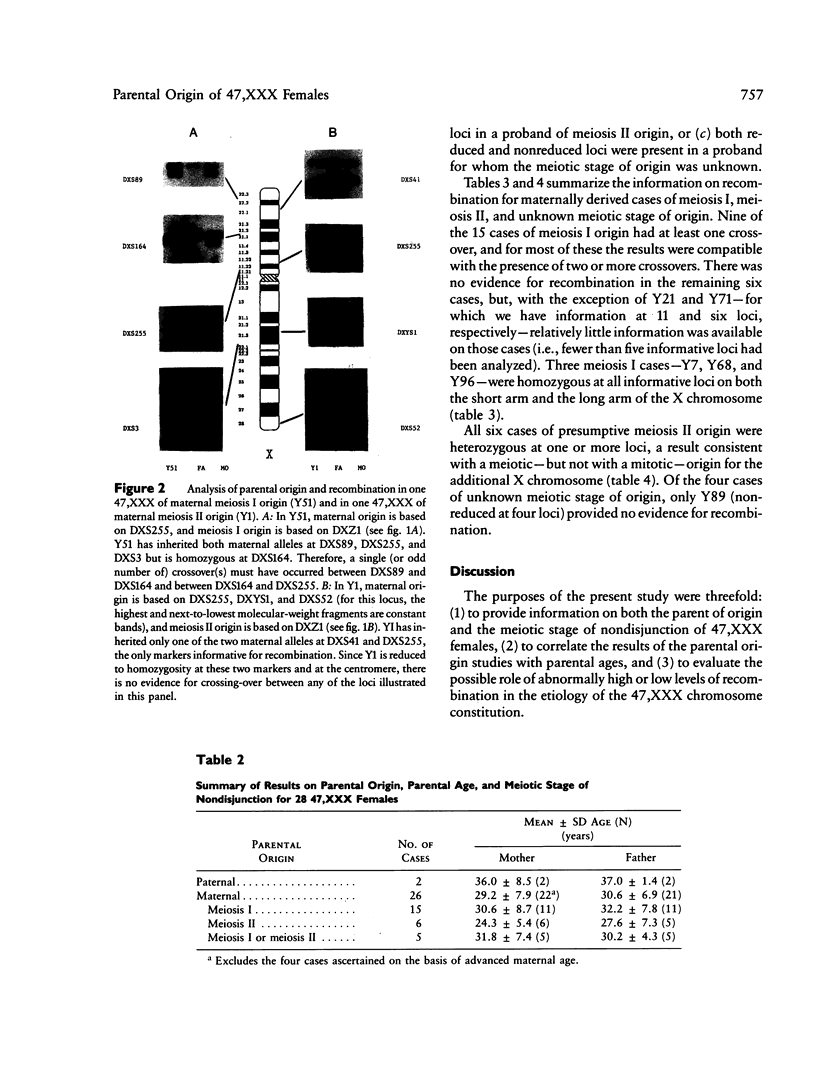
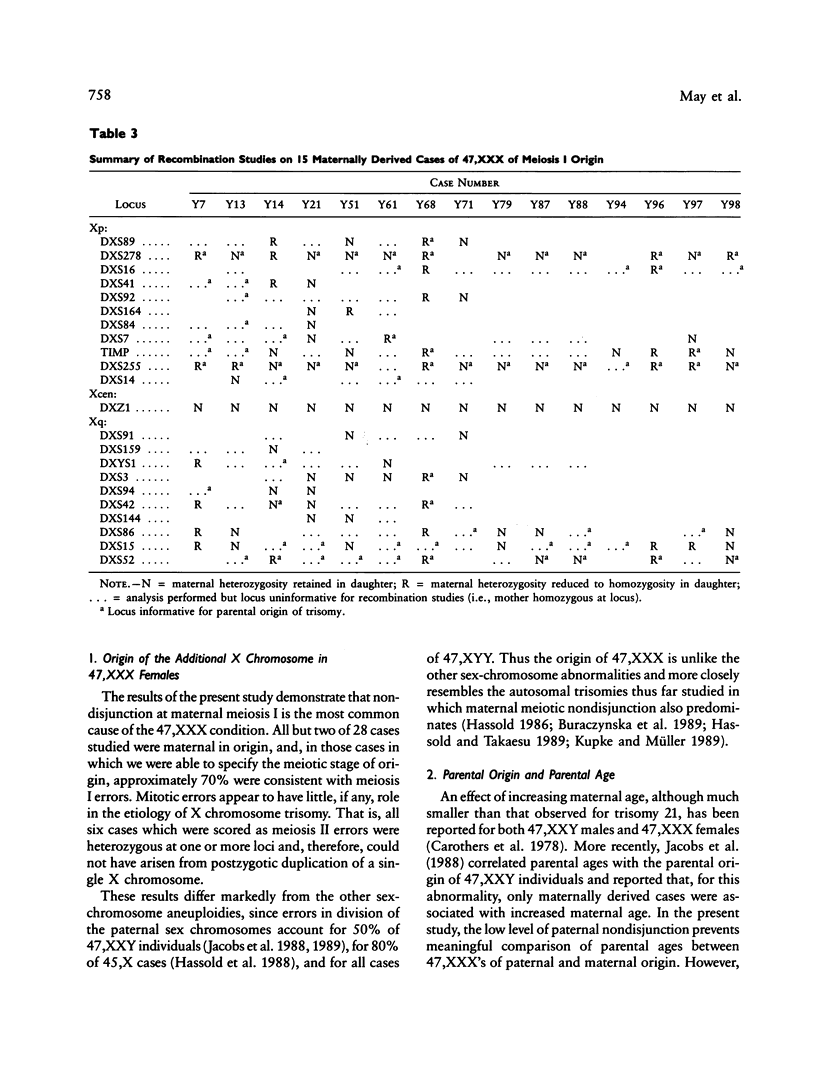
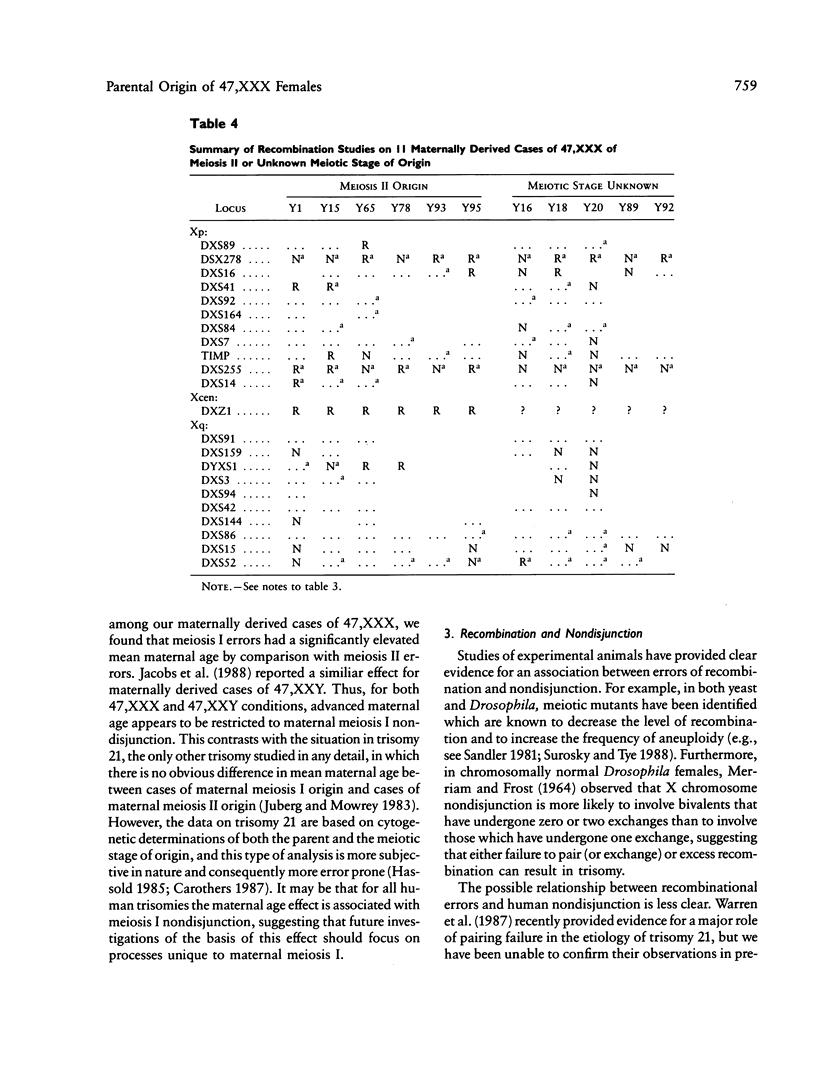
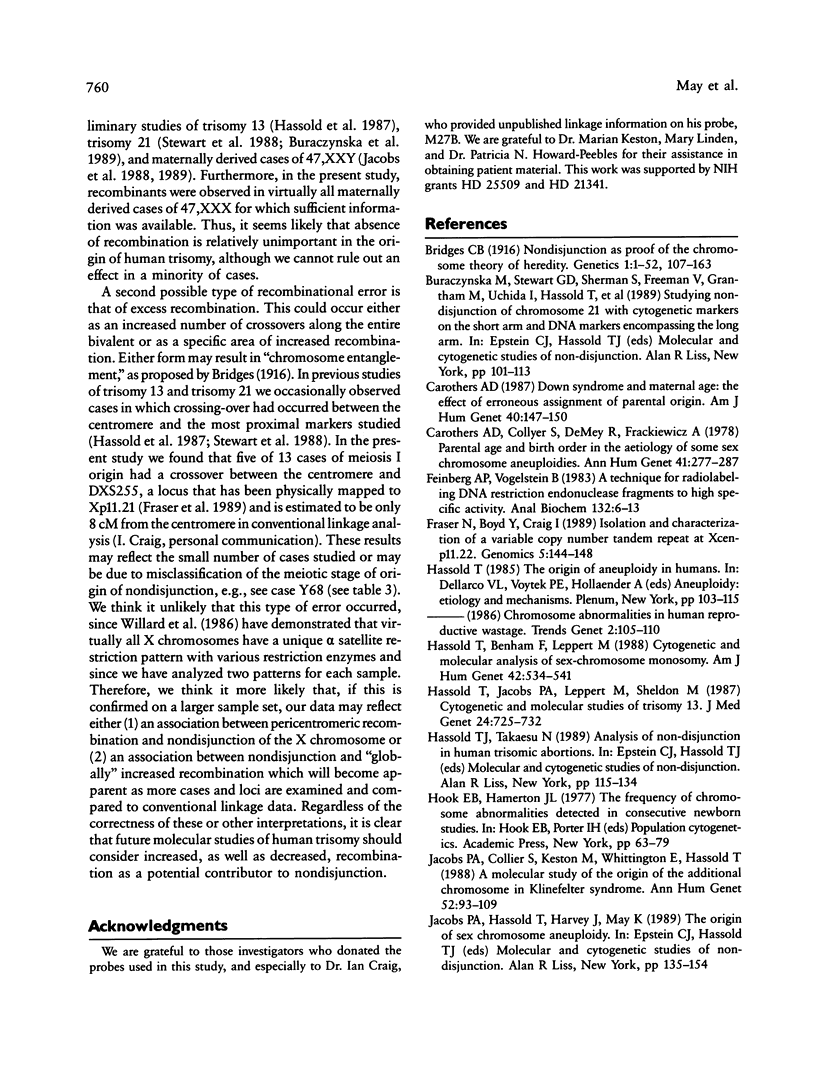
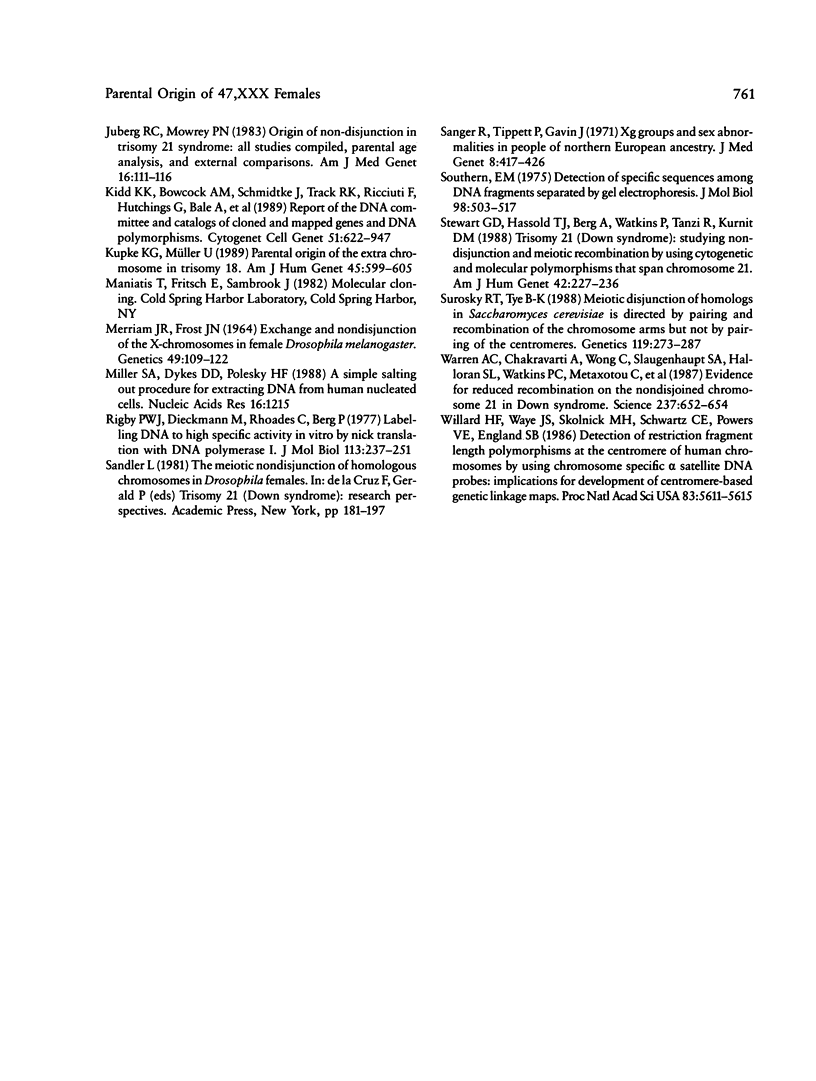
Images in this article
Selected References
These references are in PubMed. This may not be the complete list of references from this article.
- Bridges C. B. Non-Disjunction as Proof of the Chromosome Theory of Heredity (Concluded). Genetics. 1916 Mar;1(2):107–163. doi: 10.1093/genetics/1.2.107. [DOI] [PMC free article] [PubMed] [Google Scholar]
- Carothers A. D., Collyer S., De Mey R., Frackiewicz A. Parental age and birth order in the aetiology of some sex chromosome aneuploidies. Ann Hum Genet. 1978 Jan;41(3):277–287. doi: 10.1111/j.1469-1809.1978.tb01895.x. [DOI] [PubMed] [Google Scholar]
- Carothers A. D. Down syndrome and maternal age: the effect of erroneous assignment of parental origin. Am J Hum Genet. 1987 Feb;40(2):147–150. [PMC free article] [PubMed] [Google Scholar]
- Feinberg A. P., Vogelstein B. A technique for radiolabeling DNA restriction endonuclease fragments to high specific activity. Anal Biochem. 1983 Jul 1;132(1):6–13. doi: 10.1016/0003-2697(83)90418-9. [DOI] [PubMed] [Google Scholar]
- Fraser N. J., Boyd Y., Craig I. Isolation and characterization of a human variable copy number tandem repeat at Xcen-p11.22. Genomics. 1989 Jul;5(1):144–148. doi: 10.1016/0888-7543(89)90099-2. [DOI] [PubMed] [Google Scholar]
- Hassold T. J., Takaesu N. Analysis of non-disjunction in human trisomic spontaneous abortions. Prog Clin Biol Res. 1989;311:115–134. [PubMed] [Google Scholar]
- Hassold T., Benham F., Leppert M. Cytogenetic and molecular analysis of sex-chromosome monosomy. Am J Hum Genet. 1988 Apr;42(4):534–541. [PMC free article] [PubMed] [Google Scholar]
- Hassold T., Jacobs P. A., Leppert M., Sheldon M. Cytogenetic and molecular studies of trisomy 13. J Med Genet. 1987 Dec;24(12):725–732. doi: 10.1136/jmg.24.12.725. [DOI] [PMC free article] [PubMed] [Google Scholar]
- Jacobs P. A., Hassold T. J., Whittington E., Butler G., Collyer S., Keston M., Lee M. Klinefelter's syndrome: an analysis of the origin of the additional sex chromosome using molecular probes. Ann Hum Genet. 1988 May;52(Pt 2):93–109. doi: 10.1111/j.1469-1809.1988.tb01084.x. [DOI] [PubMed] [Google Scholar]
- Juberg R. C., Mowrey P. N. Origin of nondisjunction in trisomy 21 syndrome: all studies compiled, parental age analysis, and international comparisons. Am J Med Genet. 1983 Sep;16(1):111–116. doi: 10.1002/ajmg.1320160117. [DOI] [PubMed] [Google Scholar]
- Kidd K. K., Bowcock A. M., Schmidtke J., Track R. K., Ricciuti F., Hutchings G., Bale A., Pearson P., Willard H. F., Gelernter J. Report of the DNA committee and catalogs of cloned and mapped genes and DNA polymorphisms. Cytogenet Cell Genet. 1989;51(1-4):622–947. doi: 10.1159/000132810. [DOI] [PubMed] [Google Scholar]
- Kupke K. G., Müller U. Parental origin of the extra chromosome in trisomy 18. Am J Hum Genet. 1989 Oct;45(4):599–605. [PMC free article] [PubMed] [Google Scholar]
- Miller S. A., Dykes D. D., Polesky H. F. A simple salting out procedure for extracting DNA from human nucleated cells. Nucleic Acids Res. 1988 Feb 11;16(3):1215–1215. doi: 10.1093/nar/16.3.1215. [DOI] [PMC free article] [PubMed] [Google Scholar]
- Rigby P. W., Dieckmann M., Rhodes C., Berg P. Labeling deoxyribonucleic acid to high specific activity in vitro by nick translation with DNA polymerase I. J Mol Biol. 1977 Jun 15;113(1):237–251. doi: 10.1016/0022-2836(77)90052-3. [DOI] [PubMed] [Google Scholar]
- Sanger R., Tippett P., Gavin J. Xg groups and sex abnormalities in people of northern European ancestry. J Med Genet. 1971 Dec;8(4):417–426. doi: 10.1136/jmg.8.4.417. [DOI] [PMC free article] [PubMed] [Google Scholar]
- Southern E. M. Detection of specific sequences among DNA fragments separated by gel electrophoresis. J Mol Biol. 1975 Nov 5;98(3):503–517. doi: 10.1016/s0022-2836(75)80083-0. [DOI] [PubMed] [Google Scholar]
- Stewart G. D., Hassold T. J., Berg A., Watkins P., Tanzi R., Kurnit D. M. Trisomy 21 (Down syndrome): studying nondisjunction and meiotic recombination by using cytogenetic and molecular polymorphisms that span chromosome 21. Am J Hum Genet. 1988 Feb;42(2):227–236. [PMC free article] [PubMed] [Google Scholar]
- Surosky R. T., Tye B. K. Meiotic disjunction of homologs in Saccharomyces cerevisiae is directed by pairing and recombination of the chromosome arms but not by pairing of the centromeres. Genetics. 1988 Jun;119(2):273–287. doi: 10.1093/genetics/119.2.273. [DOI] [PMC free article] [PubMed] [Google Scholar]
- Warren A. C., Chakravarti A., Wong C., Slaugenhaupt S. A., Halloran S. L., Watkins P. C., Metaxotou C., Antonarakis S. E. Evidence for reduced recombination on the nondisjoined chromosomes 21 in Down syndrome. Science. 1987 Aug 7;237(4815):652–654. doi: 10.1126/science.2955519. [DOI] [PubMed] [Google Scholar]
- Willard H. F., Waye J. S., Skolnick M. H., Schwartz C. E., Powers V. E., England S. B. Detection of restriction fragment length polymorphisms at the centromeres of human chromosomes by using chromosome-specific alpha satellite DNA probes: implications for development of centromere-based genetic linkage maps. Proc Natl Acad Sci U S A. 1986 Aug;83(15):5611–5615. doi: 10.1073/pnas.83.15.5611. [DOI] [PMC free article] [PubMed] [Google Scholar]



